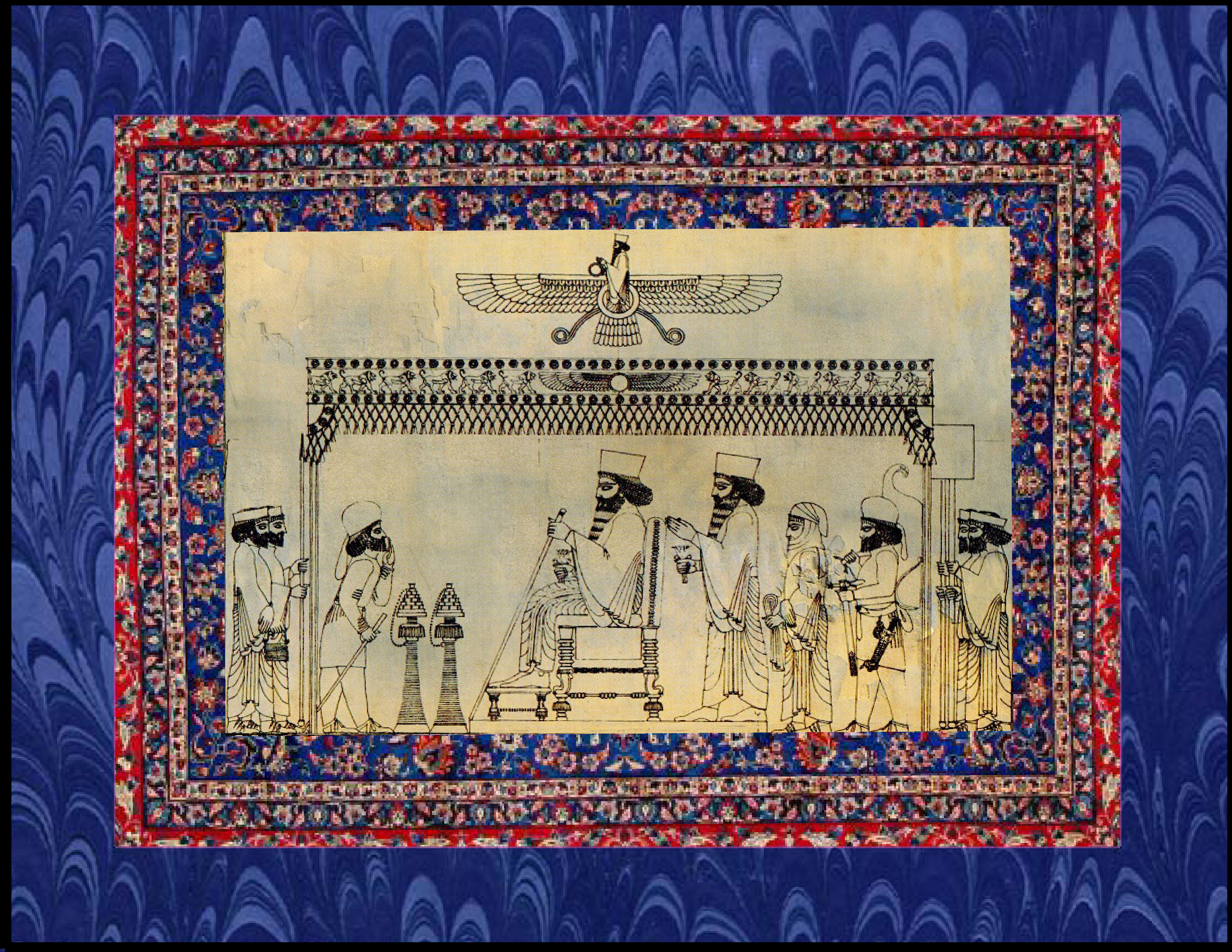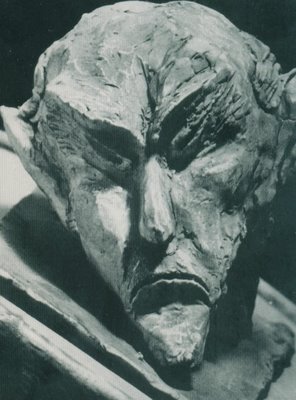 Submitted by PALLAS ATHENA -... on
Submitted by PALLAS ATHENA -... on

Derivative Images: This artistic manuscript depicts an image of a Persian palace under Faravahar. This spirit above the palace is the symbol of their official religion, Zoroastrianism.
The prophet Zoroaster was the reformer who transformed Persian polytheism into the first monotheism. Although little is known about the old Persian polytheism, apparently some of the old gods were demoted and retained as angels in Zoroaster’s synthesis.
The struggle between good and evil occupies center stage in the Zoroastrian worldview. The god of light and the upper world, Ohrmazd or Ahura Mazda (Wide Lord), and his angels are locked in a cosmic struggle with the god of darkness and the lower world, Angra Mainyu or Ahriman (Evil Spirit), and his demons.

The head of Ahriman by Rudolph Steiner
The oldest angels in the Zoroastrian system are the six (sometimes seven) holy immortals, often identified as archangels. The holy immortals play an important role in the foundation of the faith, revealing the true religion to Zoroaster in a series of visions. As Zoroastrianism developed, the number of celestial beings multiplied, leading some observers to remark that the old polytheistic system had unwittingly been revived in the later stages of this religious tradition.
At some point, a new class of angel, the yazatas (“worshipful ones”), emerged. They became so important that they seemed to eclipse Ahura Mazda himself. Chief among the yazatas was Mithra, the god/angel of light and truth, the mediator between earth and heaven, as well as the preserver and judge of this world. Other new angels, some of them transparently former gods of the old Indo-European pantheon, were Haoma, angel of the sacred intoxicant; Vata or Vayu), who rules the winds; and Verethragna, the Persian equivalent of the Indian god Indra.
Each of the twelve months had its own Yazata, and the same is true for each of the thirty days of each month. There was also a Yazata specifically for Prayer, named Sraosha (also known at the Yazata of Obedience). This Yazata gained in prominence during the Achaemenid period, but was already “beloved by Zoroaster himself. The prophet names him several times in the Gathas, and once (Y 33.5) calls him ‘greatest of all’, presumably as guardian of the means — prayer — through which man can approach God.” [p. 74]
Angels A-Z by evelyn Dorothy Oliver and James R. Lewis
http://egregores.wordpress.com/
Sources:
Cohn, Norman. Cosmos, Chaos and the World to Come: The Ancient Roots of Apocalyptic
Faith. New Haven, Conn.: Yale University Press, 1993.
Eliade, Mircea, ed. A History of Religious Ideas. Vol. 1. Chicago: University of
Chicago Press, 1978.
Noss, John B. Man’s Religions. 4th ed. New York: Macmillan, 1969.
- 8571 reads